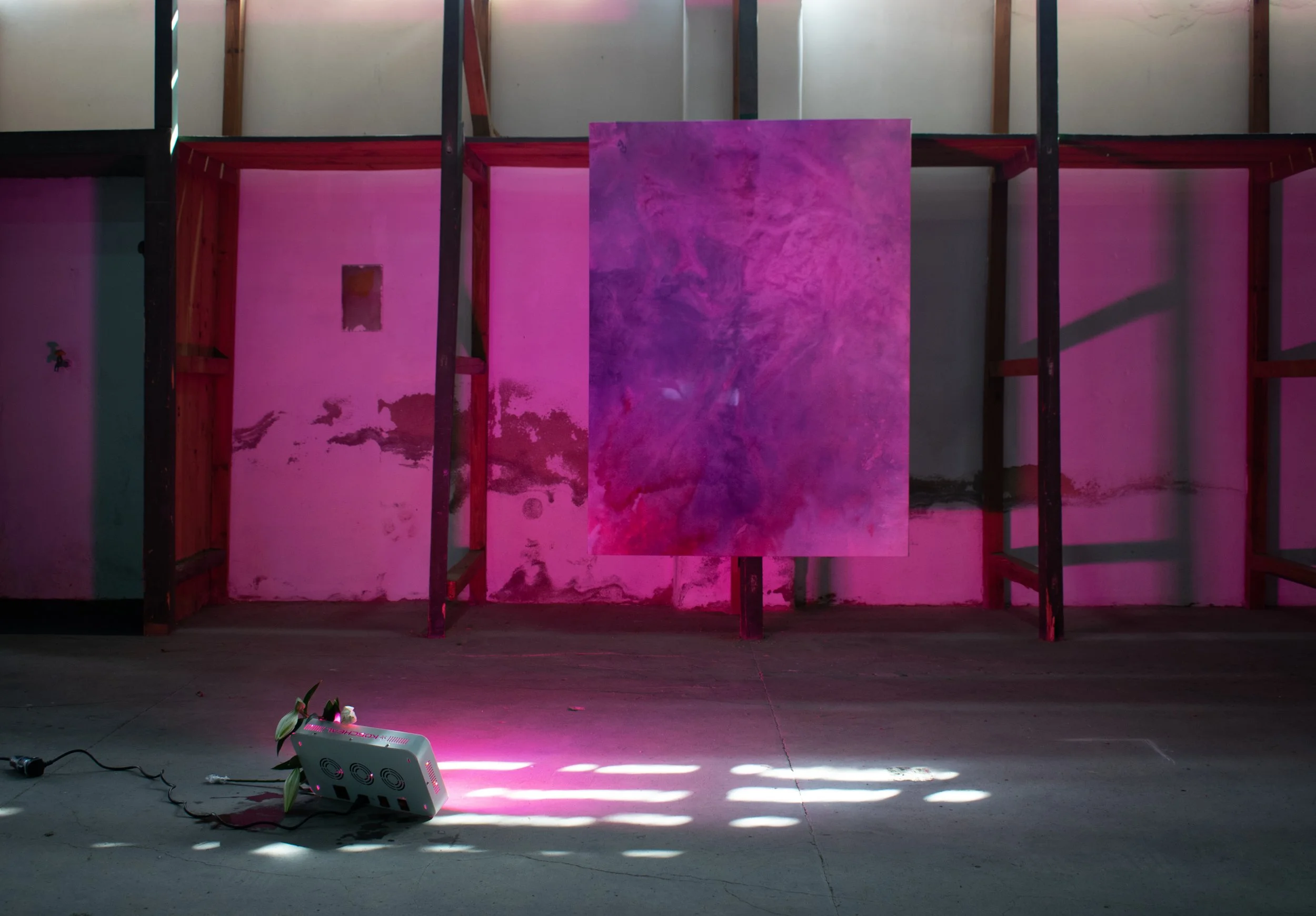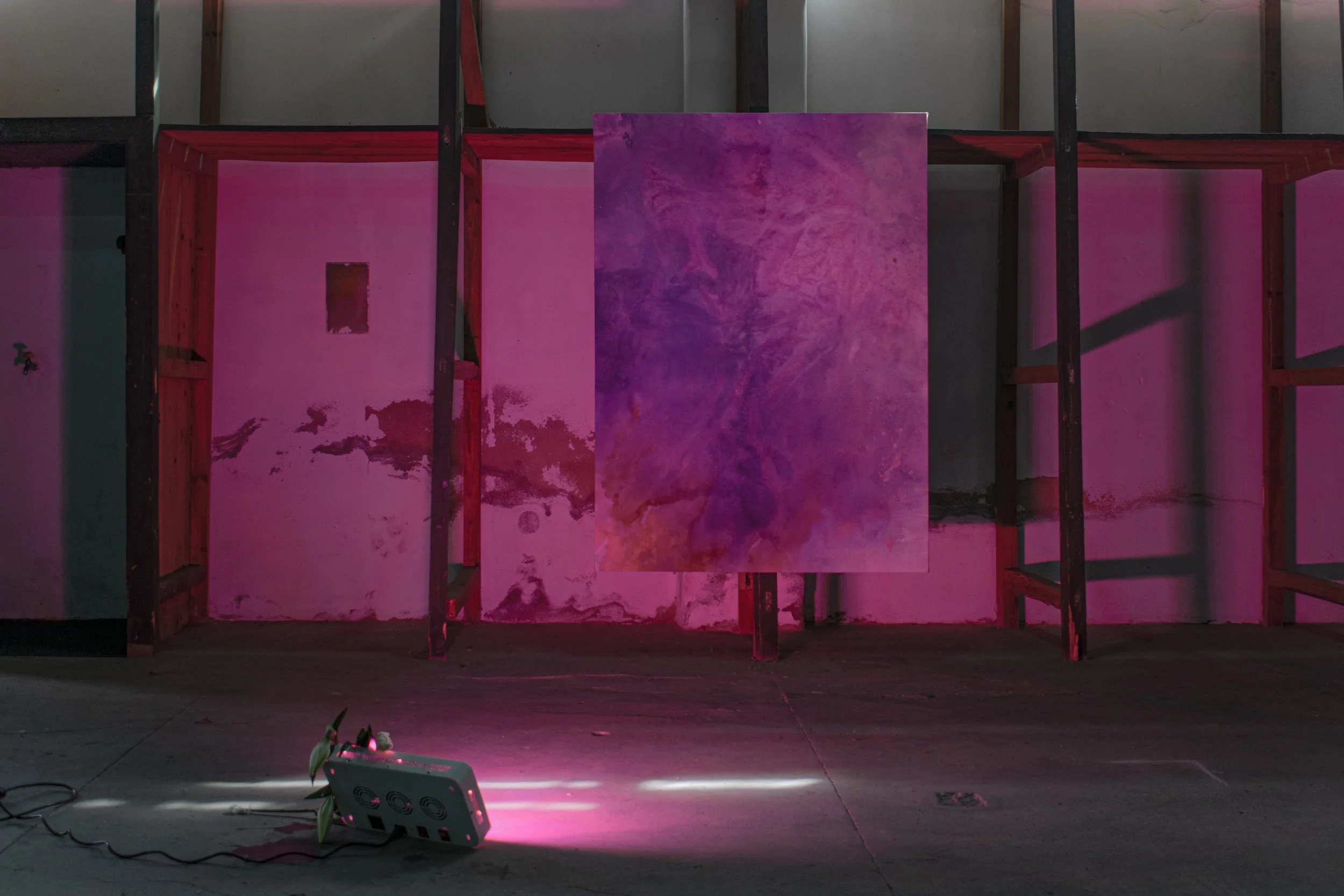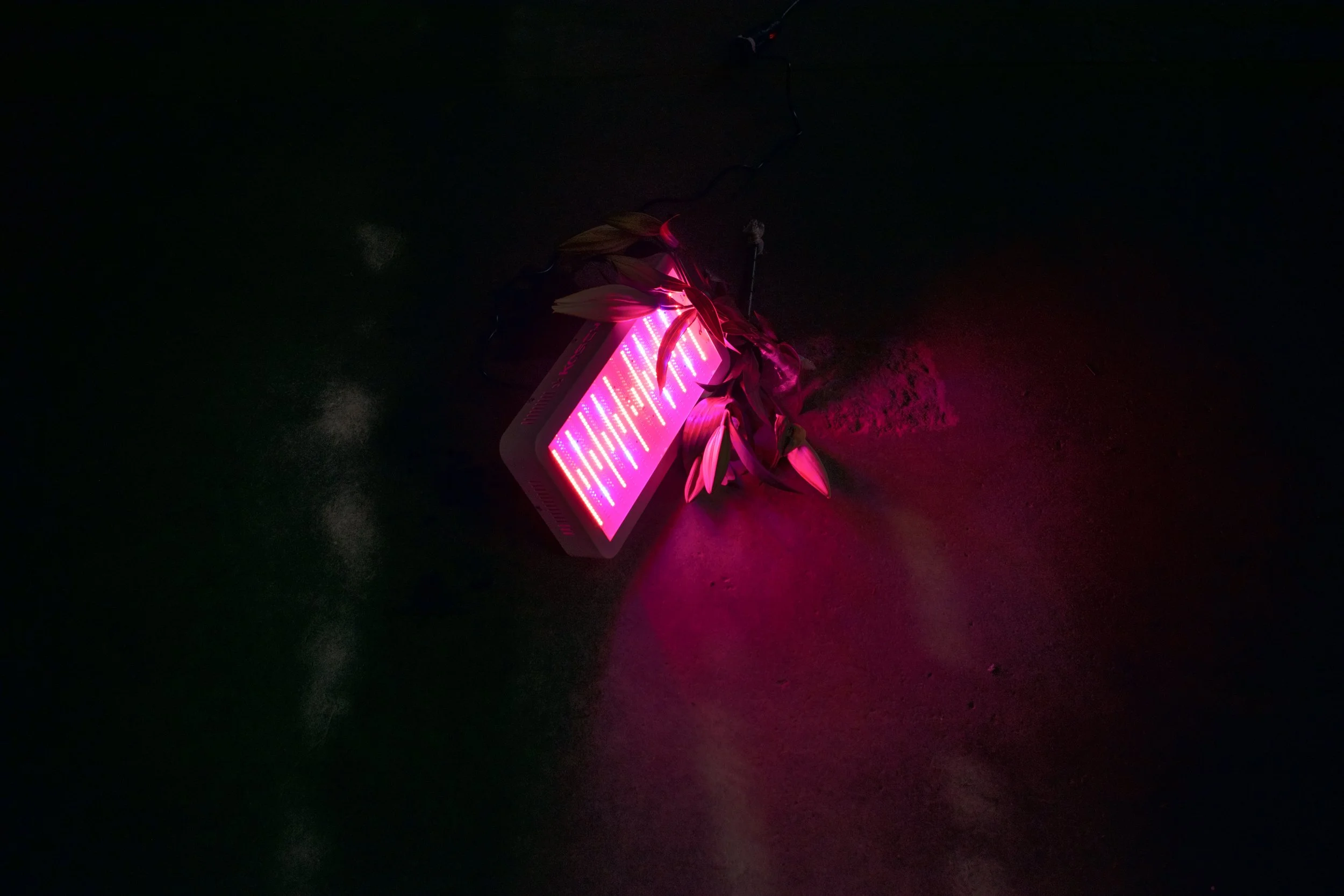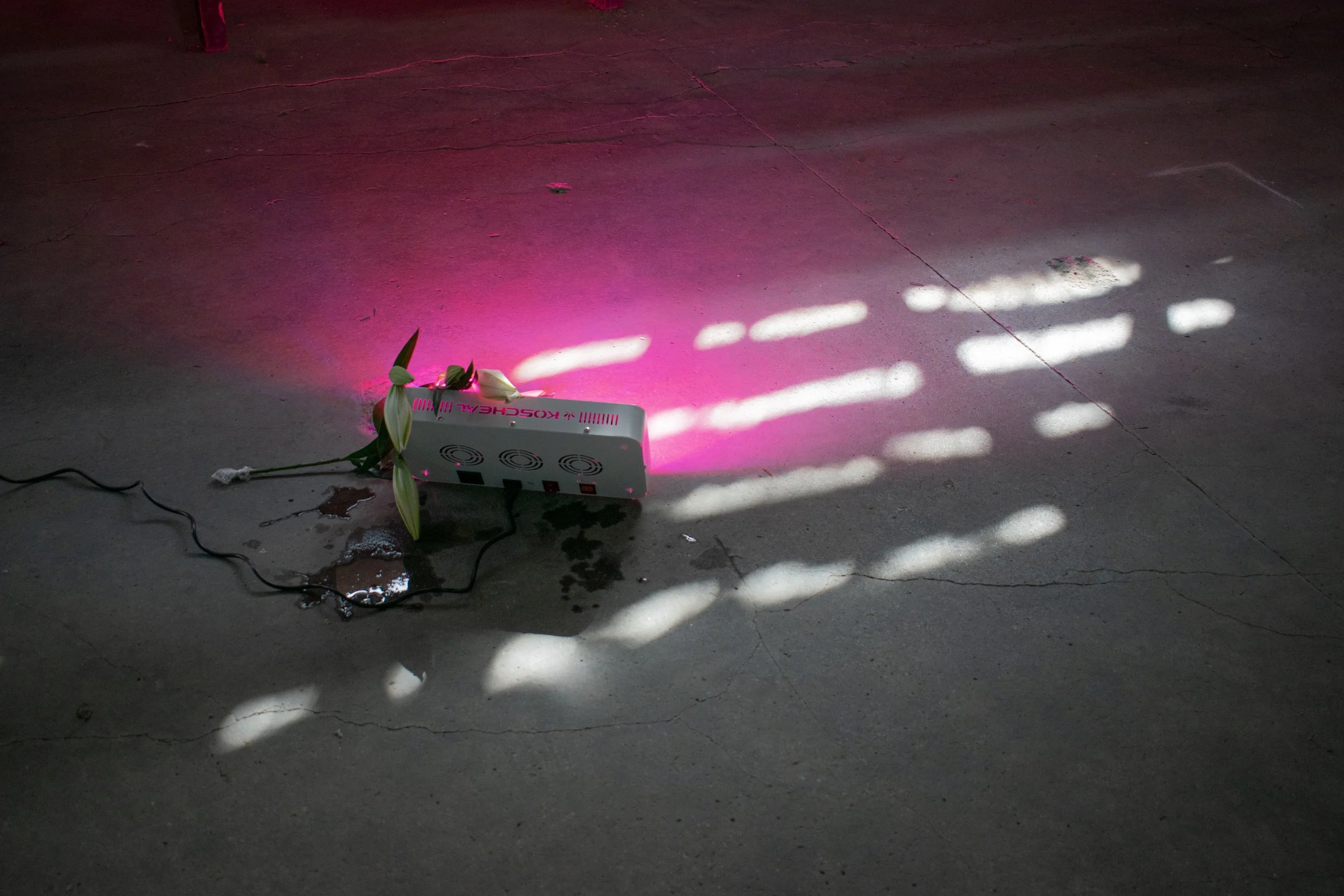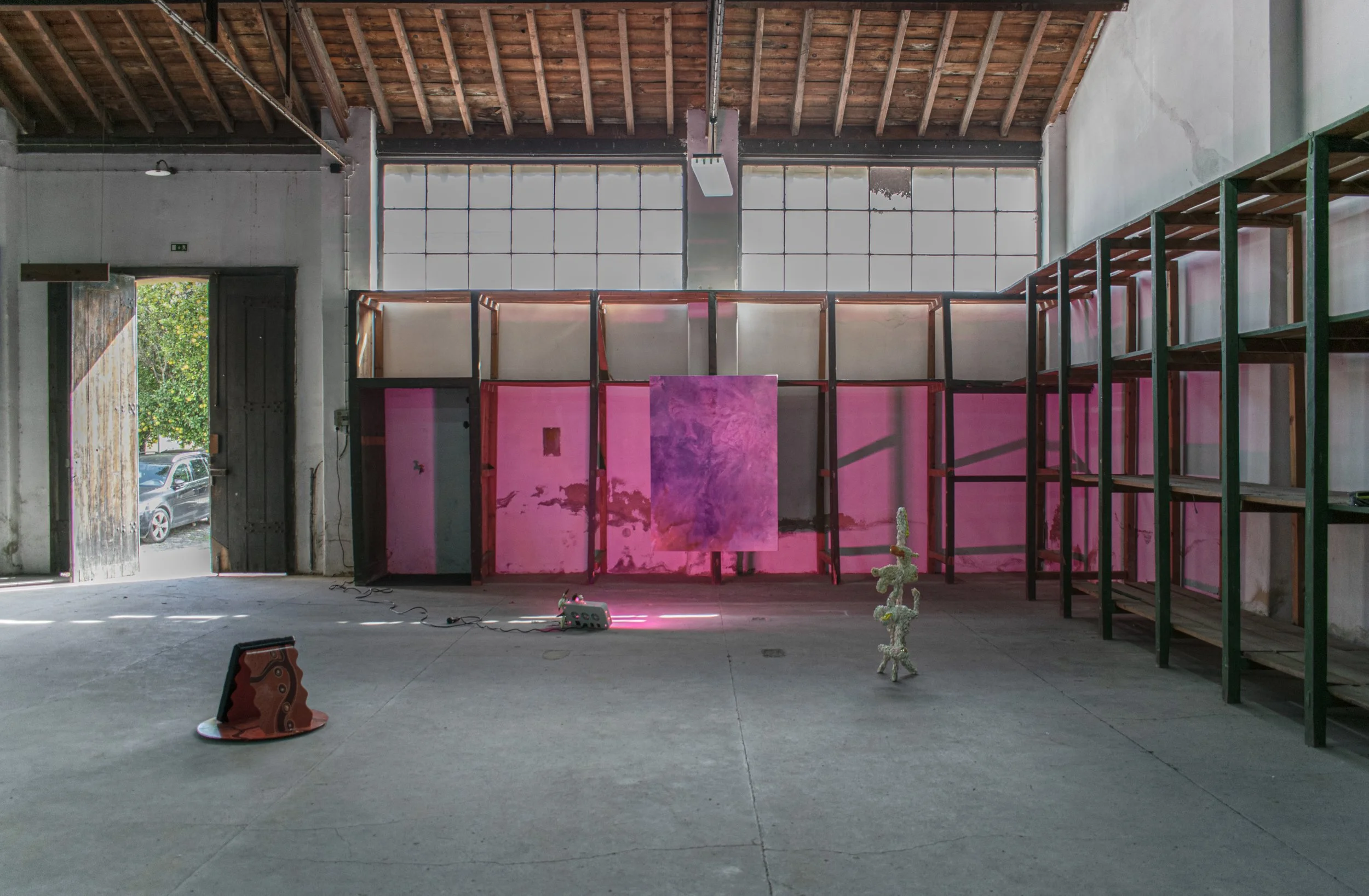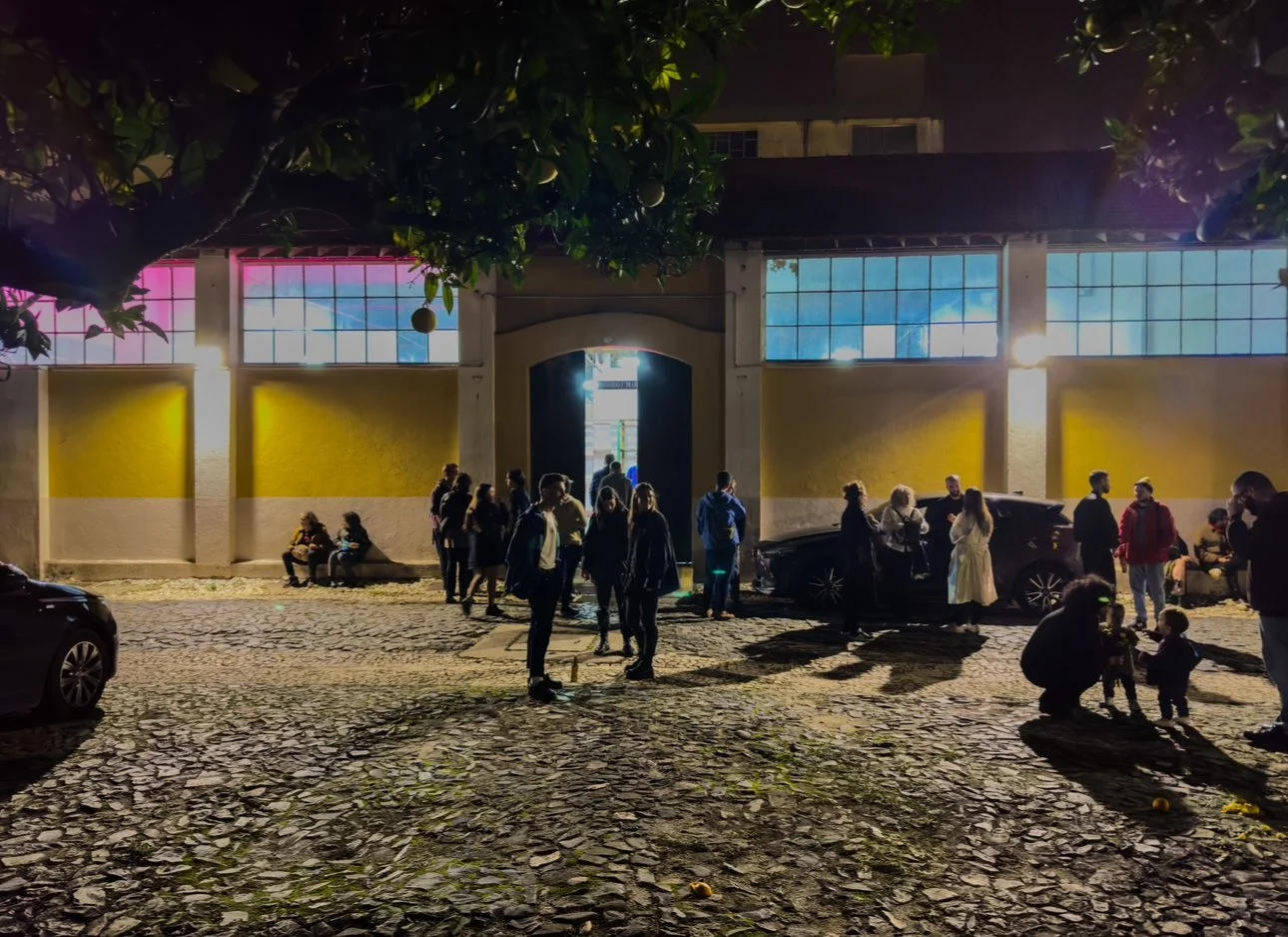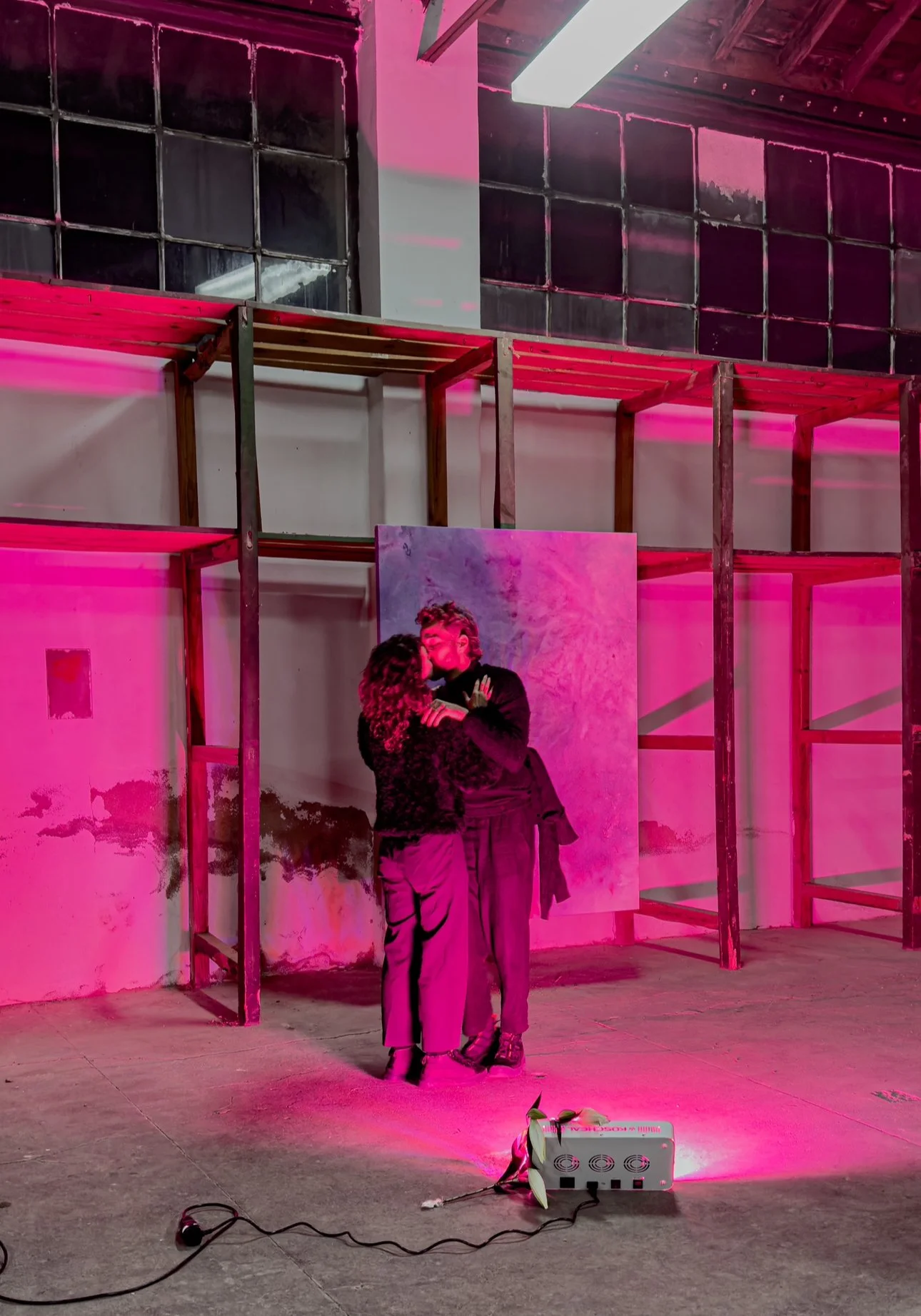Purple Pools, 2022
Hot pink, Dark Orchid, Ruby ink, and marble dust on canvas
180 x 130 cm
armour, 2023
sucrose, arthrospira and laser engraving on perspex sheet
28 x 22 x 0,03 cm
pink horticulture light, white Lilies
A cephalopod uses ink as a defence mechanism to disguise itself in so-called mysterious clouds, smoke screens and false bodies. Its retreat only adds to its allure, leaving those who encounter disoriented and lost. As a master in camouflage, the chromatophores on its skin allow to adapt to a variety of colours and patterns, despite its own inherent colourblindnesses. An intriguing phenomenon of blindness and deceptive spectacle.
Pink Eyes brings together new works for "Taking the light out of the Prism”. The installation consists of a painting, a wall object, an LED light and a bundle of fresh lily flowers.
Purple Pools, 2023 is one out of a series of abstract paintings Weißbach started while in residency at Duplex in 2022. Inspired by the water's influence on the city because of its geographical connections along the Tagus River she used this element as an agent to corpus. Flooding the canvas several times with a pink, red, and purple ink-soap-water mix and balancing it out with ratchet straps to overcome gravitational forces. Stains of colour layered into each other while the fabric slowly absorbed the pigments like a surface akin to skin, with its unique porousness and opaqueness. The title refers to a chemical imbalance in swimming pools caused by copper and a high level of cyanuric acid, a component found in bleaches, disinfectants, and herbicides usually added to protect from degradation caused by sunlight (UV radiation).
armour, 2023 consists of a delicate layer of sucrose and spirulina on a perspex plate. This greenish rectangular sugar coated shield showcases a golden-like emblem. A CGI image of Weißbach's experiments with spun sugar, laser-engraved within temperatures of up to1000 degrees and made visible through the alchemical reactions of caramelization.
The installation is bathed in a soft pink glow, delivered by an LED light typically utilised for vertical farming, as natural sunlight hovers on the brink of availability - a synthetic nurturing system, euphoria in wavelength.
A cluster of fresh lilies leans against the LED slowly diffusing their sweet, floral, and aromatic fragrances into the room. euphoria in wavelength and olfactory. I am intimately connected. Lovelorn and trapped.
Even though the installation consists of several works, it can be understood as one overall examination. The title "Pink eyes, 2023," references a common allergic reaction triggered by red ink, Weissbach experienced during the making process causing an inflammation in her eyes. A visible manifestation of increased circulatory activity and heightened permeability as an alert reaction within the blood system. As blood vessels widen, immune cells, fluids, and proteins migrate into the tissue, initiating a repair process. A continuous cycle of clearing and reconstruction.
Pink eyes can also be associated with the German idiom Durch die rosarote Brille sehen (seeing the world through rose-tinted glasses) - a situation where someone is seeing things in an overly optimistic and idealised way, often ignoring negative aspects or realities.
Pink, in essence, isn't a spectral colour but rather a result of blending red and blue wavelengths on a molecular level. Our perception of pink is a combination of those - a form of hallucination, interpreted by our brains when the red and blue cones in our eyes are activated.
The installation encapsulates Weißbach’s interest in the subconscious, and politics of desire within environmental philosophy and psychological frameworks using symbolic and the imaginary to disguise nuances of personal participation and rather relate to the intricate bonds and hidden meanings of material determination. While produced for the exhibition the installation exists in context to former works - a tentacular network between elements, materials and the unconscious.
